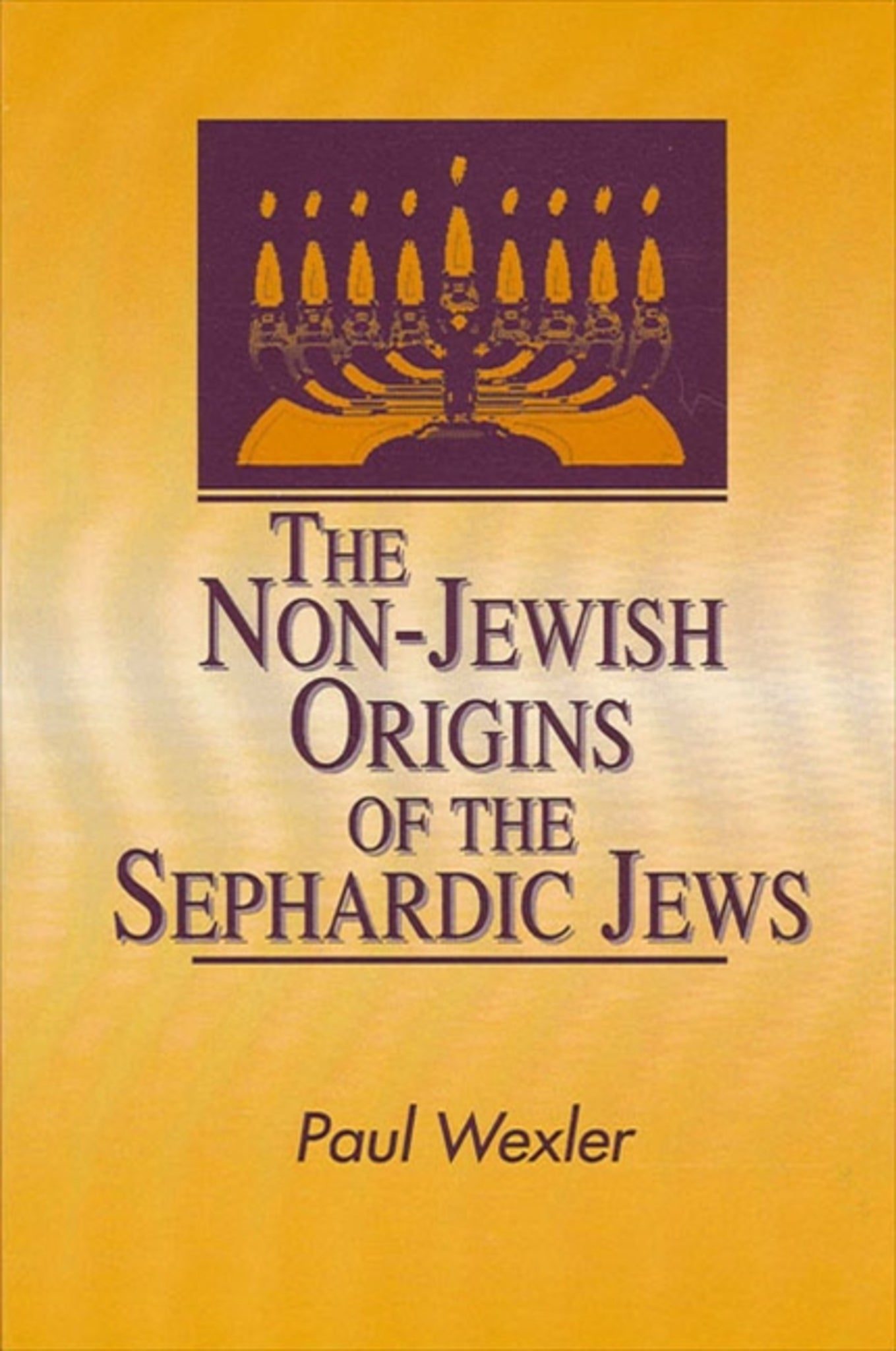We're sorry. An error has occurred
Please cancel or retry.
The Non-Jewish Origins of the Sephardic Jews

Some error occured while loading the Quick View. Please close the Quick View and try reloading the page.
Couldn't load pickup availability
- Format:
-
15 February 1996

The author uses linguistic, ethnographic, and historical evidence to support his theory that the origins of Sephardic Jews are predominantly Berber and Arab.
In The Non-Jewish Origins of the Sephardic Jews, Paul Wexler presents a groundbreaking theory that challenges the conventional narrative of Sephardic Jewish origins. Through an in-depth exploration of linguistic, historical, and ethnographic evidence, Wexler argues that the Sephardic Jews—long believed to be the descendants of ancient Judaeans—are, in fact, the descendants of Berber and Arab proselytes who converted to Judaism during the medieval period.
Drawing from an extensive array of sources, including linguistic studies of Judeo-Arabic, Ladino, and Yiddish, Wexler builds a compelling case for the North African roots of Sephardic Jewry. He identifies traces of Berber and Arab cultures embedded within the language, religion, and folk traditions of Sephardic Jews, revealing an intricate tapestry of cultural exchange and religious transformation.
The book also revises the historical understanding of the term Sephardic and the role of conversion in the formation of Jewish communities across North Africa, Spain, and the broader Mediterranean world. Wexler's meticulous analysis highlights the significant influence of Arabic and Berber linguistic features on Judeo-Spanish and Judeo-Arabic, challenging long-held assumptions about the "Hispanicity" of Sephardic Jews.
Incorporating elements of religious syncretism and the cultural assimilation of Berber and Arab practices, Wexler’s study offers a new lens through which to view the complex processes of Judaization in the Iberian Peninsula. This comprehensive and original work will appeal to scholars and readers interested in Jewish history, linguistic anthropology, and the rich cultural legacy of the Sephardic Jews.


"This is a fascinating book based upon a wealth of diverse sources not usually brought together by scholars of Sephardic history. It is based upon the premise that Jewish languages such as Judeo-Arabic, Ladino, and Yiddish offer invaluable clues to ethnic origins.
"Wexler challenges the prevailing view that Sephardic Jewry did not have its genesis in Spain, but in North Africa, and that the Sephardic Jews were not descended from the ancient Judaeans, but were primarily the posterity of Berber proselytes. The author detects remnants of this North African Berber and Arab substrate in the language and culture of the Sephardic Jews. He marshals a dazzling array of historic, literary, ethnographic, and—most important—linguistic data in support of his highly original hypotheses." — Norman A. Stillman, Binghamton University
Abbreviations and Citations
A Note on Citations and Linguistic Terminology
Preface
1. Approaches to the Study of Jewish Ethnicity and Ethnic Myths
2. Conversion to Judaism in the Asian, African, and Iberian Lands up to c.1200 A.D.
The Role of Conversion in the Formation of the Sephardic Jews
The Migration of Western Asian Jews to the Western Mediterranean
The Role of Western Asian Converts in the Formation of the Sephardic Jews
Conversion to Judaism in North Africa and Spain
The Contribution of Women Converts to the Formation of the Sephardic Jews
Syncretistic Religious Expression in Spain (with special attention to the Marranos)
3. The North African Homeland of the Sephardic Jews and the Origin of the Term "Sephardic"
The Alleged "Hispanicity" of the Sephardic Jews
Towards a New Periodization of Sephardic History
4. The Berbero-Arab Roots of the Sephardic Jews
Evidence from Language
The Status of Palestinian Hebrew and Judeo-Aramaic and the Determination of Sephardic Ethnic Origins
Jewish Onomastics as a Reflection of the Ethnic Origins of the Sephardic Jews
Jewish Migration from North Africa to Spain as Reflected in North African Latin and Greek Elements in Judeo-Arabic and Judeo-Spanish
The Arabic Imprint on Judeo-Spanish and Judeo-Spanish "Hebrew"
Iberian Judeo-Spanish Arabisms which are Unique in Inventory, Form, or Meaning
The Arabized Pronunciation of Judeo-Spanish and Judeo-Spanish "Hebrew"
Arabic Grammatical process in Judeo-Spanish and Judeo-Arabic/Judeo-Spanish "Hebrew"
The Broken Plural in Judeo-Spanish "Hebrew" and Judeo-Arabic
Periphrastic Verbs with Hebrew Components in Judeo-Spanish
The Agentive Formation in Judeo-Spanish and Judeo-Spanish "Hebrew"
World Order in Compund Numerals in Judeo-Spanish "Hebrew"
Determination in Modified Noun Phrases in Judeo-Spanish "Hebrew"
Derived Verb Forms in Judeo-Spanish "Hebrew"
The Copying of Arabic Patterns of Discourse in Judeo-Spanish and Judeo-Spanish "Hebrew"
The Common (")Hebrew(") and (")Judeo-Aramaic(") Corpus of Judeo-Arabic and Judeo-Spanish
The Impact of Berber on Iberian (Judeo-)Arabic and (Judeo-)Spanish
Evidence from Religion and Folk Culture
5. The Processes of Judaization
The Elimination of Berber and Arab Practices
The Retention of Obsolete Berber and Arab Practices and their Nomenclature
The Espousal of Ashkenazic, Provencal, Romaniote, and New Berber and Arab Practices
The Recalibration of Christian Terms and Practices
The Recalibration of Muslim Arabic Terms and Names in Iberian Judeo-Arabic and (Judeo) Spanish
6. Findings and Challenges
Bibliography
Index of Names and Topics
Index of Segments, Words, and Phrases



